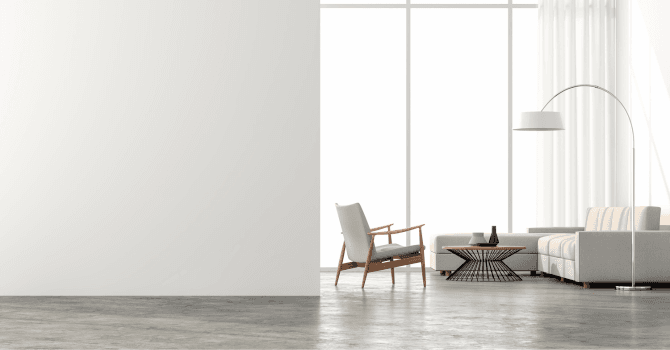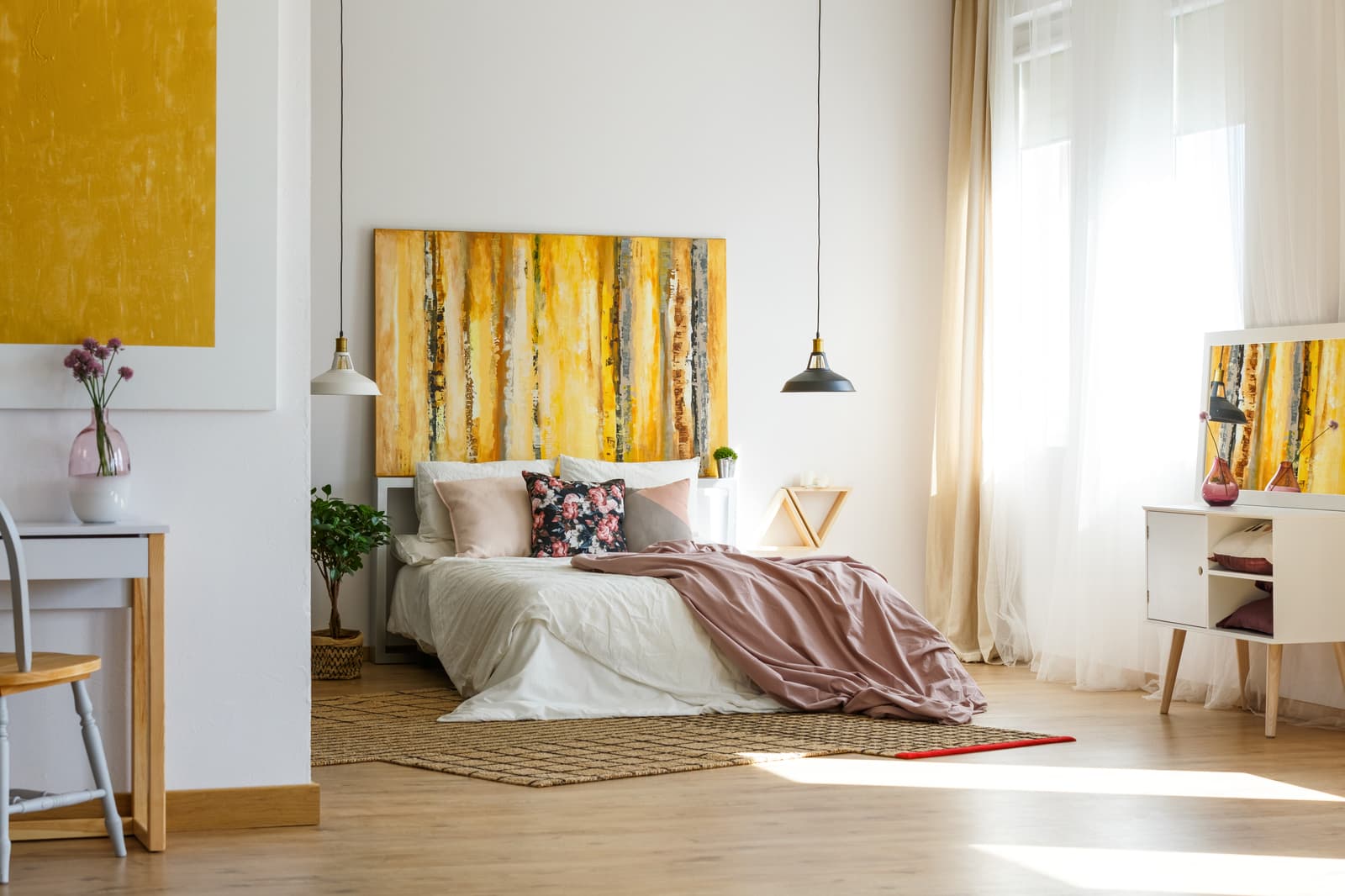Composite Panels: Uniting Durability and Functionality
By Editorial Team
Updated on July 2, 2024

Composite panels are far from the latest addition in all things construction-related. However, what is groundbreaking is the wide range of materials from which such panels are manufactured.
Wood, aluminum, fibreglass, or linen even; so how to choose between the lot? It all depends on the panel's intended use.
What Is a Composite Panel?

A panel is said to be composite when it’s made with a rigid support (e.g., a polyethylene core) and a secondary panel or waterproof multilayered sheet (e.g., aluminum), laminated together in-factory. As such, composite materials consist of two elements:
A matrix (oftentimes polymer)
A reinforcement (organic fibres, minerals, etc.)
It can, for example, be made with the following:
Metal (reinforcement) and plastic (matrix)
Fibreglass (reinforcement) and polyester (matrix)
Wood (reinforcement) and polymers (matrix)
The above-listed panels differ on account of their manufacturing processes and properties.
Different Types of Composite Panels in Canada

Wood Composite Panels
Wood composite panels don't only make for great siding, cladding, balcony coverings, or soffits, they’re also visually appealing, easy to clean, durable, and affordable. Wood composite panels are:
Weather-resistant (-20°C to +80°C)
Waterproof
UV-resistant
Rot-resistant
Termite repellent
Shock- and scratch-resistant
They’re all the more interesting given that they’re both eco-friendly and aesthetic. Indeed, wood composite panels are wood fibre and recycled plastic composites issued from a waste-to-energy supply chain. In other words, industry-related businesses make use of unwanted materials:
Sawmill residue
Primary wood processing residue
Secondary wood processing residue
This construction industry-specific sector gave light to a consortium—Corepan-Bois—with the hope of:
Improving productivity
Training highly-qualified personnel
Elevating Canada—fourth largest industry—to a top three position
Aluminum Composite Panel (ACP)
Aluminum composite panels, also known as ACPs, are categorized as “sandwich panels.” Why? Because they’re made of two aluminum layers, covering a core made of a different material, which happens to be polyethylene in the majority of cases.
ACP flat panels are used in construction to cover building envelopes, from cladding to interior fixtures. Aluminum composite panels also serve as advertising signs, given their smooth surface, allowing for adhesives to bond to the material easily. ACPs, known for their ease of installation and design versatility, are also found in the makings of commercial stand roofing, where they’re highly sought-after on account of their finish, as well as the wide range of colours in which they’re retailed.
Said material has numerous assets, given that it is:
Durable (shock-, salt-, and UV-ray resistant, and weatherproof)
Recyclable
Fireproof
Lightweight
Aesthetic
Cost-effective
Fibreglass Composite Panels
Fibreglass is commonly used in the agri-food industry. Indeed, fibreglass panels are great for outfitting food processing facilities. Their smooth surfaces streamline maintenance, and their significant chemical resistance prevents harsh environment-related degradation.
What really sets this material apart from other composite panels is their sizing. Spanning lengths capable of covering 1,200 x 3,000 mm (47 in x 118 in), using such panels significantly reduces the amount of joints needed.
Another asset: The possibility of mounting panels on almost all surface types:
Bond stone
Concrete
Faience
Gypsum
And more
Carbon Fibre Boards
Carbon fibre boards aren’t predominantly used in the construction industry, but rather in the aerospace industry, chemistry-related fields, and machinery. Made with carbon fibre and a resin matrix (oftentimes an epoxy resin), it has excellent resistance and a better modulus of elasticity compared to steel panels, yet weighs less.
As a result, they can even be found inside train carriages and boat hulls.
In the construction industry, carbon fibre isn’t retailed in panel or board form, but rather in the following three compositions:
Dry carbon fibre
Carbon fibre fabric
Pre-preg fabric
Carbon fibre is used for a lot of civil engineering work to reinforce certain structural components. As such, it makes for stronger and more resilient buildings in case of earthquakes.
Sandwich Panels
This sort of panel designates the material’s core as being framed, on all sides, by another layer of material. According to manufacturers, the core can either be:
Expanded polystyrene (EPS)
Polyethylene terephthalate (PET)
Polyurethane
The panel’s sides can then be covered with fibreglass or aluminum. However, what will determine the panel’s intended use is its core material. For example:
Expanded polystyrene (EPS) core: industrial, residential, commercial, marine, and agricultural industries, as well as others.
Polypropylene (bee hive): zones requiring high impact resistance, bullet traps (with a Kevlar reinforcement)
Polyethylene terephthalate (PET): zones requiring high compression and flexion resistance, good thermal and acoustic insulation, and shock resistance.
Polyurethane: walk-in coolers, freezers, roofing, modular buildings, etc.
Natural Panels
By natural panels, we mean materials made of natural fibres. The fibres used are typically:
Linen
Hemp
Jute
Sisal
Ramie
When used, it’s often to promote local resources stemming from countries that are still under-developed or to reduce a specific sector’s environmental impact, such as the construction industry.
However, note that natural fibre insulation panels aren’t 100% renewable or eco-friendly, as said technology isn’t there yet. While research is still ongoing in the hopes of discovering bio-based binders, petrol-based binders are still the most commonly used products.
What Are Composite Panels Used For, and Where Are They Used?

Fencing
Albeit not often thought about, fencing can very well be made with wood composite panels. Resilient and aesthetically pleasing, such panels make the perfect fence as it’s not likely to lose its sheen over the years.
Therefore, some manufacturers offer rigid panel slats for fencing protected by a barrier-like layer, allowing the panels to withstand the following:
Bad weather
UV rays
Wind
Moisture
Courtesy of the material’s great resilience and a wide array of colours, you can also use it to shield your pool since it isn’t susceptible to moisture or harsh environments (chlorine, salt, etc.).
Exterior Wall Cladding or Siding
Composite panels make for great exterior cladding material. They can be mounted according to the ventilated façade principle. To do so, a wooden or aluminum structure will serve as the load-bearing surface.
Then, the composite panels are secured to the extrusion using brackets and profiles. The goal is quite simple: have a 30-mm gap between the composite panels and the façade. Said void will serve as an air space.
The installation process can be done in an open (with a small gap between every panel) or closed manner (devoid of gaps—using top caps).
Interior Wall Panelling or Suspended Ceilings
Interior wall panelling is often made with polyurethane sandwich panels. Why is that? Simply because polyurethane is a great soundproofing material. As such, it’s ideal for cloistering different areas.
The same applies to suspended ceilings as polyurethane is also a great thermal insulation material, depending on its cell structure.
Polyurethane, used to shape the panel’s matrix, can be covered with an aluminum reinforcement. Said material is favoured for its aesthetic and mirror-like effect.
How to Clean Composite Panels

Once again, it all depends on the material used as the composite panel’s reinforcement layer. When it comes to composite wood, soapy water and a sponge are all you need to clean such a surface.
For aluminum, the process is a tad more tricky. In most cases, water, a sponge, and a soft rag will get the job done. The key factor with aluminum is to avoid using abrasive materials and harsh chemicals. Indeed, using such cleaners risks damaging the cladding.
The same applies to fibreglass panels that are, too, fragile. As such, avoid using metal scrub brushes. Any rust covering fibreglass surfaces must be removed with a dedicated anti-rust product. For regular upkeep, it’s best to keep it simple with water, soap, and a sponge.
Get 3 quotes for your renovation project
RenoQuotes.com can help you get quotes from a general contractor. By submitting your project, we’ll put you in contact with top-rated contractors. Fill in the form on the homepage (it only takes a few minutes) and get estimates from trusted professionals.
Dial 1-844 828-1588 to speak with one of our customer service representatives.
Looking for something else?
Related articles
The latest industry news, interviews, technologies, and resources.

Editorial Team
•23 Jul 2025
Whether you’re looking to create a modern or industrial look, the versatility of waxed concrete will surprise you every time. It's the number-one option whenever you want to add a distinctive touch to your new décor. However, before using this coating as part of your revamped space, learn more about it.

Editorial Team
•23 Jul 2025
True to its name, stamped concrete combines two things: concrete and stamps. While this definition paints a rather clear picture of what this building material actually is, it’s still important to delve into its other defining factors, thereby taking a closer look at other types of concrete.

Editorial Team
•07 Nov 2023
Window shutters are a classic choice when it comes to indoor and outdoor home decor. They offer a hint of sophistication while increasing the privacy of your home.

Editorial Team
•03 Nov 2025
Building a home addition is beneficial in many ways. Whether accommodating new members of the family or just looking to add a bit more space, homeowners choose to add rooms to their homes for a variety of reasons. However, you can’t just place an extra room on the side of your house and call it a day! Home additions take careful planning to be executed properly.

Cynthia Pigeon
•17 Dec 2024
With the new year ahead, major developments are being ushered into the renovation industry.